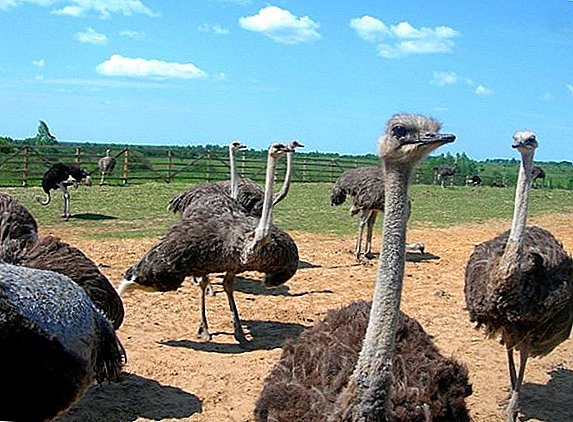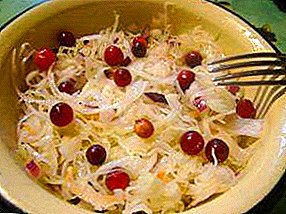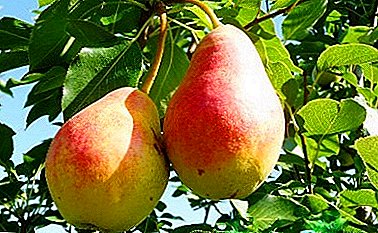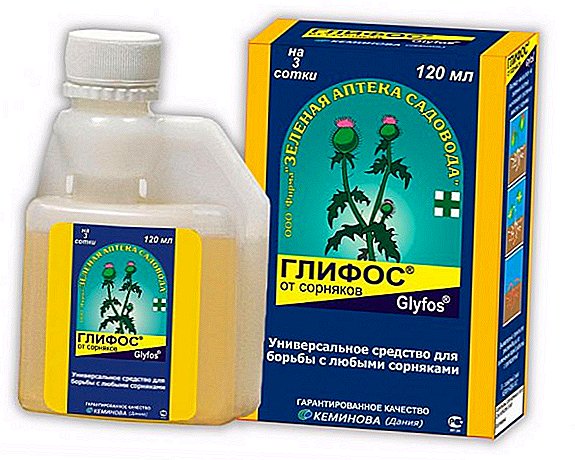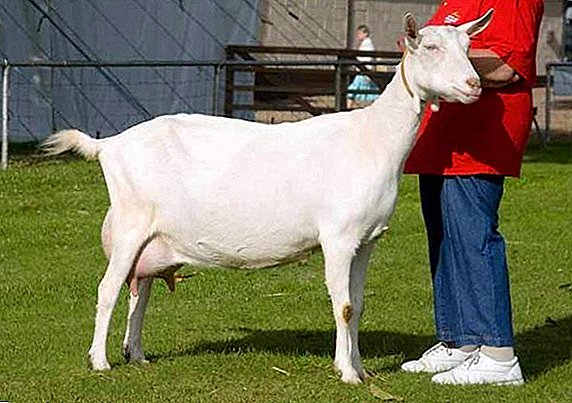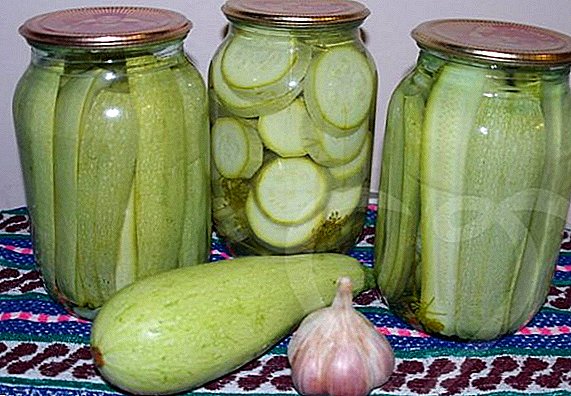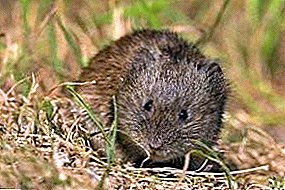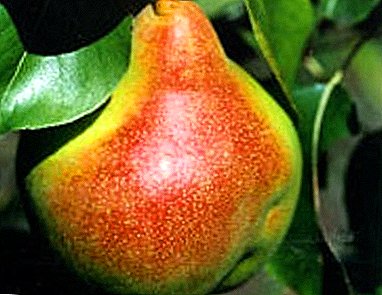
Russian breeders working with pear crops over the years have created a vibrant and diverse family of all kinds of pear-beauties.
Here and "Forest Beauty", and "Michurinsk Beauty", and "Russian Beauty", and other similar varieties, often pointing to the place of birth and growth.
Pear is not the last place in this group. "Samara Beauty", description and photo of which you will find below.
It seems to have embodied the rule of the "golden mean" - on the one hand, its harvests do not make themselves too eager to wait for impatient fruit gourmets, and on the other, the plant has enough time to have time to feed on high-quality summer heat and heavy August rains.
What kind of pears refers?
 On the basis of precocity, which determines the exact periods of fruit ripening, pear "Samara Beauty" belongs to the category of early autumn fruit crops.
On the basis of precocity, which determines the exact periods of fruit ripening, pear "Samara Beauty" belongs to the category of early autumn fruit crops.
Usually, the removable maturity of the fruits of the specified type occurs (against the background of rather late budding and late flowering) in the first half of September.
Autumn varieties also include Svetlyanka, Svarog, Otradnenskaya, Pamyati Yakovleva and Tema.
After harvesting the fruit can be stored in a cool and dry place no more than a month. In the case of extended shelf life pears may deteriorate significantly.
As for the earlyness of the tree, that is, the age of the plant's entry into active fruiting, the variety "Samara Beauty" is a medium fruit culture.
According to the biological "passport", the first more or less stable and significant yields she gives for 5-6 year of her life (and not after planting the sapling).
After reaching the specified age tree under favorable climatic conditions and sufficient care bears fruits on an industrial level every year.
Varieties of Memory of Zhegalov, Yakovlevskaya, Hera, Lada and Nursery can also bring a good harvest.
Breeding history and breeding region
The pear variety described here was born in the Middle Volga region. It was developed taking into account the climatic and agrotechnical features of this part of Russia, which, in the opinion of many experts, is well suited for the active development of gardening.
The selection of a new variety was carried out by researchers of the state Research Institute of Horticulture and Medicinal Plants "Zhiguli Gardens" (Samara region) S. Kedrin, A. Kuznetsov, T. Kedrin.
 In order to get a new original look of a pear, an elite pear variety has been systematically crossed "Kuybyshev Golden" (parent couple - varieties "Victory" and "Fields") with a pear "Dessert" (parent couple - Aleksandrovka and "Favorite Klapp").
In order to get a new original look of a pear, an elite pear variety has been systematically crossed "Kuybyshev Golden" (parent couple - varieties "Victory" and "Fields") with a pear "Dessert" (parent couple - Aleksandrovka and "Favorite Klapp").
In 2006, a new variety was officially included in the State Varietal Register with regionalization in the Middle Volga agricultural region (Samara region).
When cultivating pears "Samara Beauty" in this particular region, breeders guarantee everything inherent in this variety. tastes and level of productivity.
In this region, such pear varieties of Cathedral, Krasnobokaya, Elena, Vernaya and Victoria are doing well.
Description varieties Samara Beauty
Pear "Samara Beauty" has the following distinctive features:
Tree
Generally characterized average or above average size (Some experts consider the tall growth of the tree as its disadvantage).
An individual usually reaches its maximum size in a relatively short time. Tree bark covers the bark of a gray-green hue.
Crown, branches. A tree of the Samara Beauty variety over time forms a leafy crown of a rounded (usually oval) shape. The main branch grows out of the trunk at an angle close to a right angle.
Moreover, the older the plant becomes, the branches become more drooping. In young branches, the primary bark is colored greenish-gray. Kore is not afraid of intense sunlight.
 Shoots. Elongated shoots of brown or brownish-brown color are formed on the tree. Cranked, strongly bare shoots recorded weak curvature.
Shoots. Elongated shoots of brown or brownish-brown color are formed on the tree. Cranked, strongly bare shoots recorded weak curvature.
Usually they are located on a tree quite compact, with upward ends. As a rule, productive fruiting is observed on spears and ringworms.
Leaves. Develop from protruding buds, characterized by some elongation in length. Sprayed leaves acquire light shades of green. The body of a medium-sized sheet is elongated. Slag sheet plate bent at the center.
Inflorescences Flowering tree varieties "Samara Beauty" is estimated as later.
Fruit
There are both medium and large pears. On an adult tree very attractive fruits usually ripen average weight is 140-190 g.
However, with particularly favorable climatic and agronomic conditions pears are recorded weighing up to 350 g The fruits have either the correct shape of a “classic” pear, or a somewhat elongated “bottle” silhouette.
"Samara Beauty" asymmetry is sometimes characteristic. If during the period of harvesting a dense, medium thickness peel is colored yellow-green, then by the time of final maturation on its smooth matte yellow surface a characteristic diffuse reddish-brown blush appears.
Numerous small subcutaneous spots of brown-green color are clearly visible on the skin.
 In the same time the pulp of this pear is distinguished by its white color and considerable juiciness. With this her The consistency can sometimes be a little rough.
In the same time the pulp of this pear is distinguished by its white color and considerable juiciness. With this her The consistency can sometimes be a little rough.
Inside the pulp in an elliptical seed nest, gray-brown ovoid-shaped seeds rest. Fruits keep on elongated, slightly curved stalk.
A photo







Specifications
Tree varieties "Samara Beauty" is different annual fruit bearing, starting from the 5-6th year of its life. At the same time every year pear increases its productivity.
This rhythm allows gardeners to harvest good harvests. In particular, according to agronomical statistics, a plant of this species in the 7th year of life can show yield up to 30-35 kg of fruit production from one tree.
 And the structure of the fruit is such that they for a long time they retain their attractive commodity ("market") appearance. Therefore, as a rule, these fruits do not have any problems with the implementation in retail chains.
And the structure of the fruit is such that they for a long time they retain their attractive commodity ("market") appearance. Therefore, as a rule, these fruits do not have any problems with the implementation in retail chains.
Speaking of the dominant taste of the ripe fruit, it is noted here pronounced sweetness with sourness. Depending on the ripening conditions, Samara Beauty pears can be either good or satisfactory. Based on the 5-point scale of the tasting appeal of fruits, this culture is estimated at 3.8-4.1 points.
Excellent taste is also demonstrated by the pears Moskvichka, Lel, Rogneda, Talgar Beauty and Fairy.
The variety is universal in practical application. Its fruits can be eaten both fresh and processed (compotes, preserves, marmalades, jellies, etc.).
Another advantage of the "Samara Beauty" is high degree of frost resistance. However, different parts of the plant react differently to severe cold. In particular, with a significant decrease in temperature to -35 ° C, fruit buds can be damaged.
In general, this variety can be safely used for laying large gardens for intensive industrial breeding.
The winter-hardy varieties include pears: Duchess, Tonkovetka, Skorospelka from Michurinsk, Severyanka and Sverdlovchanka.
Planting and care
 Before you start planting "Samara Beauty", it is necessary to choose the right and safe place for its seedling.
Before you start planting "Samara Beauty", it is necessary to choose the right and safe place for its seedling.
The main principle here, which must be remembered - the excellent quality of fruit of this variety in the future can provide only soil containing a lot of fertile black soil. Not bad culture is taking root and loam.
Like all other initially heat-loving cultures, the Samara Beauty demands that the landing site be windless and most lit by sunlight.
The presence of a constant shadow leads to the fact that pear fruits lose their sugar content.
In addition, the pear "Samara Beauty" does not tolerate excessively moist soil. If such a danger exists and it cannot be bypassed in any way, it is necessary to organize forced removal of excess moisture from the landing site. Ignoring this factor for sure will lead to a significant weakening of the plant, which may result in its death.
After the place is chosen, it is necessary to dig up the landing hole, the depth of which is 1 m, and the diameter is 60-70 cm. It is very desirable that the pit be settled for a week and a half before landing. After digging recommended pour lime mortar into it (2 glasses of fluff per bucket of water).
When the seedling is planted, it root neck should protrude 5-6 cm from the ground. If the indicated parameter is not maintained, dig the tree and re-plant. Otherwise the tree will develop from the very beginning incorrectly.
 After the seedling is in place, and its roots are covered ground mix (the earth extracted when digging the landing pit + humus (2 buckets), sand (2 buckets) and 1 cup of superphosphate)Pristine circle is pre-filled separated water (2-3 buckets).
After the seedling is in place, and its roots are covered ground mix (the earth extracted when digging the landing pit + humus (2 buckets), sand (2 buckets) and 1 cup of superphosphate)Pristine circle is pre-filled separated water (2-3 buckets).
In order to prevent undesirable cracking of the soil at the trunk of a young tree and the rapid loss of moisture, this The place is covered with a 2-3 cm layer of mulch composed of dry humus and sawdust.
Measures for the proper care of the plant include: regular irrigation of the tree (especially in the dry summer period), loosening of the garden pistille, timely introduction of organic and mineral fertilizers, pruning of dead and overgrown branches.
"Samara Beauty" does not need any special protective measures for weatherization of wood in the pre-winter.
Diseases and pests
This pear variety belongs to crops that practically not afraid of major diseasesinherent in fruit plants.
In particular, "Samara Beauty" demonstrates excellent resistance to such a common fungal disease, as //selo.guru/ptitsa/bolezni-p/gribkovye/parsha.html leafs and fruits.
 If we analyze all the basic properties of the described variety, we can conclude that the “Samara Beauty” is a real find for gardeners engaged in industrial fruit growing.
If we analyze all the basic properties of the described variety, we can conclude that the “Samara Beauty” is a real find for gardeners engaged in industrial fruit growing.



